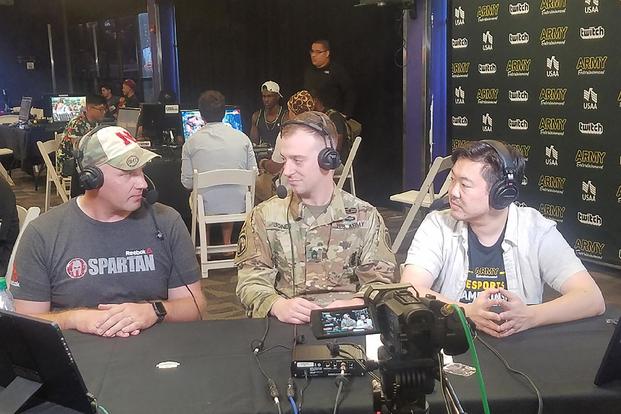Senior U.S. Army recruiting officials said Thursday that the service's new recruiting strategy is beginning to show results as they learn how to connect with America's Generation Z.
The Army launched a massive recruiting reform strategy last fall after it missed its recruiting goal for fiscal 2018 by 6,500 soldiers. The effort involves targeting 22 major cities and adding 700 recruiters.
But recruiting officials say a lot of the early success comes from the realization that they must turn to the digital world of social media to reach the 17-to-24-year-old population.
Maj. Gen. Frank Muth, commander of Army Recruiting Command, told reporters Thursday that this became clear after doing a 90-day assessment of recruiting challenges last summer.
"The overarching theme was, we are not where the youth are today," Muth said, talking about discussions he had with recruiters. "They said, 'Sir, when we will call people, they will not answer the phone.' Most people do not answer the phone when you get a number you don't recognize."
Recruiters began to use social media to recruit -- after the Army greenlit new guidelines -- and they started to see real success, he said.
The Army is also learning to connect with young people through the eSports gaming world.
The service is holding tryouts to select its top gamers for the new Army Esports Team, which will compete in local, regional and national gaming tournaments.
"In the last four weeks when we have opened the tryouts, we have 7,000 soldiers signed up to come try out for our team, and we have 20 slots," Muth said.
Sgt. 1st Class Christopher Jones, noncommissioned officer in charge of the Army Esports Team, did a 45-second live spot on social media talking about the 150 jobs the Army offers and got more than one million views during an Ultimate Fighter 5 tournament, Muth said.
"We know it is very powerful. If you look at Twitch, Twitch gets 150 million views a month watching eGames," he said.
Gen. Stephen Townsend, head of Army Training and Doctrine Command, said the goal of these types of reforms "is to give us a 21st-century digital, modern recruiting system that we can actually recruit the Army with fewer recruiters in the field. That's the goal."
So far, the results have been positive, Townsend said, explaining that the service's recruiting results for the first quarter "generally went very well. It went better than first quarter last year."
Muth said they won't have measurable results until the "second quarter and maybe even the beginning of the third."
However, 33 of the 38 recruiting battalions "beat their best" results from last year when "when we closed out at the end of December," he said.
The Army also tracks recruiting numbers monthly. The service had six battalions make 100 percent of their monthly mission, Muth said, adding that the average for the last several years has been three battalions.
"For February, what we are tracking right now is our 5th Brigade, which has most of Texas and into some of New Mexico and Arizona territory, and even some of Oklahoma and Kansas. They are about to make 100 percent of their mission, based on our projections," he said. "It's been several years since 5th Brigade made 100 percent of their monthly mission."
The Army has placed an emphasis on tracking the return on investment, Muth said.
It sent 120 recruiters to the recent Army-Navy football game, he said, which netted a "face to face with 3,988 potential applicants."
"Out of that, we got 1,500 leads. Out of that, we got 500 appointments and, out of that, we got 11 contracts," Muth said.
He tried to put the effort into perspective.
"So if I want to do 85,000 for a year, I have to talk to 14 million, which gives me 500,000 appointments, which 400,000 actually show up, 250,000 agree to take the test, 150,000 pass and, out of that, 95,000 will have signed a contract, but only 85,000 actually cross the floor," Muth said, explaining, "I have to keep about 8,000 for next year to help me start the year, and 2,000 are just going to fail out."
"So when someone says, 'You talked to 3,000 people and you made 150 appointments and you only got 11 contracts?' I go, 'It takes 40 no's to make one yes.'
"That is why the digital is so important because the digital works 24/7. A recruiter goes home at [7 p.m.], but that digital meme is still rolling at [2 a.m.] and some kid rolls onto his Instagram account and checks it out."
-- Matthew Cox can be reached at matthew.cox@military.com.












